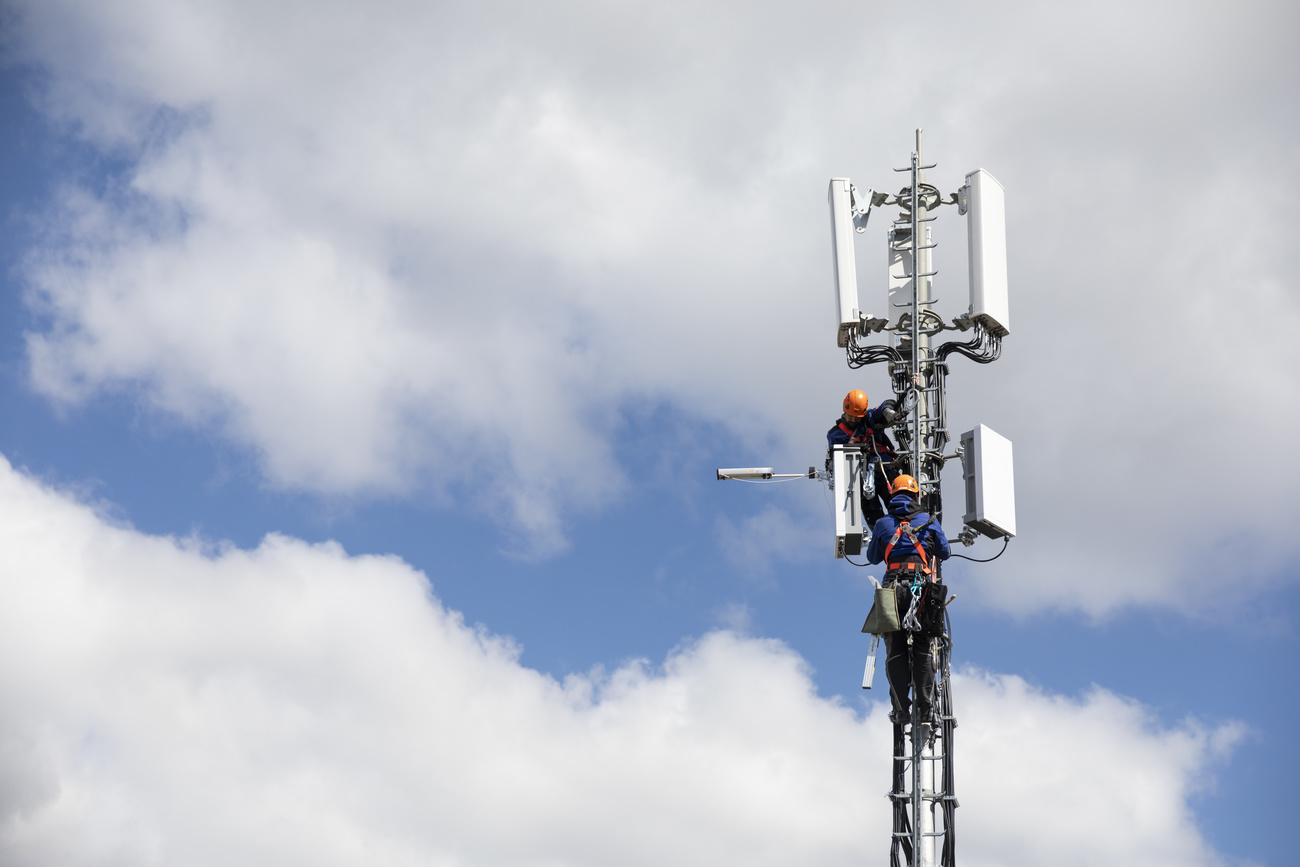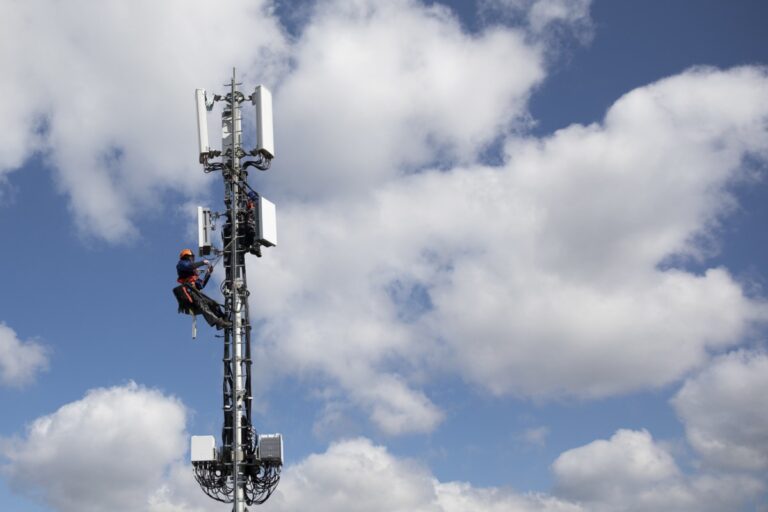
5G antenna installed in Bern.
© Keystone / Peter Kranzher
Adaptive antennas can now transmit with up to 10 times more power than conventional antennas during peak transmissions. The power of these 5G antennas is politically set, according to an investigation by Swiss public radio station RTS, who had access to documents under transparency laws.
5G development has been gaining momentum in Switzerland since the end of 2020, with new so-called adaptive antennas being built, RTS writes.External linkThis allows for a new generation of mobile phones and directional communication, the problem being that the transmission range is small, so the ability to transmit louder was an issue.
The decision is being made politically behind the scenes by a working group made up of operators, federal agencies, environmental physicians, and state representatives. A key point of discussion is setting the “K factor,” a number that determines whether operators can increase the power of their directional antennas.
more

more
5G rollout remains divided in Switzerland
This content is
May 12, 2022
Opinion in Switzerland remains divided on the issue of expanding 5G telecommunications networks, according to a survey.
Read more: 5G rollout remains divided in Switzerland
After discussions, the parties could not reach an agreement: the Environmental Physicians Association does not want to increase the power; the Federal Environment Agency wants to allow the operators to set the directional antennas at up to four times the legal power; the operators want to be able to set the power up to 15 times; the Federal Communications Agency even agrees to set it up to 20 times.
On December 16, 2020, at a meeting of ministries and agencies chaired by the then Minister of Communications, Simonetta Somaruga, it was decided that these adaptive antennas would be able to transmit with ten times more power than conventional antennas during peak periods, provided that their six-minute average did not exceed that of conventional antennas.
This decision is in line with the operator’s policy, which proposed the figure of “10 times” during discussions within the working group.
Financial interests
The challenge of increasing the power of 5G antennas is the development of 5G networks. Documents obtained by RTS contain figures that the Ministry of Communications wants to keep secret. According to these figures, if the new antennas could not transmit any louder, 46,000 more antennas would have to be built, while the carrier’s solution would reduce the number of antennas to be built to 3,100. The current reality is somewhere in between.
According to the Environmental Physicians Association, the health effects could be harmful, which is why they didn’t want this correction factor.
“New trends in radiation exposure from adaptive antennas represent for us a potential hazard that has not yet been fully studied. Therefore, from our point of view as physicians, the planned correction factors do not guarantee the maintenance of the protection level. It is important for us that neither the implementation support nor the explanations or press releases give the impression that the protection level required by law is maintained in the planned regulation,” reads a December 14, 2020 letter from Doctors for the Environment to Somaruga.
more

more
Government report says 5G is not harmful to health
This content is
July 28, 2022
A federal study has found for the first time that 5G technology does not pose any adverse health effects.
Read more: 5G not harmful to health, government report says
Political issues
RTS asked the Ministry of Communications to comment on these decisions, to which it initially replied: “The correction factors were determined on the basis of scientific measurements carried out on site by the Federal Agency for the Environment and Communications. These measurements confirmed that adaptive antennas emit less radiation than conventional antennas. This made it possible to set the correction factor at -10 dB while maintaining the health protection level. In all cases, antennas must comply with the limit values.”
He added: “As in many sectors, the decision on adaptive antennas is the result of a balancing of interests. The authorities are trying to meet society’s needs regarding digitalization while at the same time protecting the health of residents.”
The ministry dodged questions about why it decided to take such a step against the industry, or why it decided not to follow the lead of the Environment Department, which is responsible for protecting the public’s health, in making these kinds of decisions: “The political questions you are asking no longer exist, they concern the management, which is conducting its own reflection.”
It is worth noting that the new management team under the leadership of the new Minister of Communications, Albert Rösti, is expected to announce shortly the implementation of a motion aimed at creating the general conditions conducive to the rapid rollout of 5G. So politics could get things moving again soon.
Translated from French by DeepL/ts



